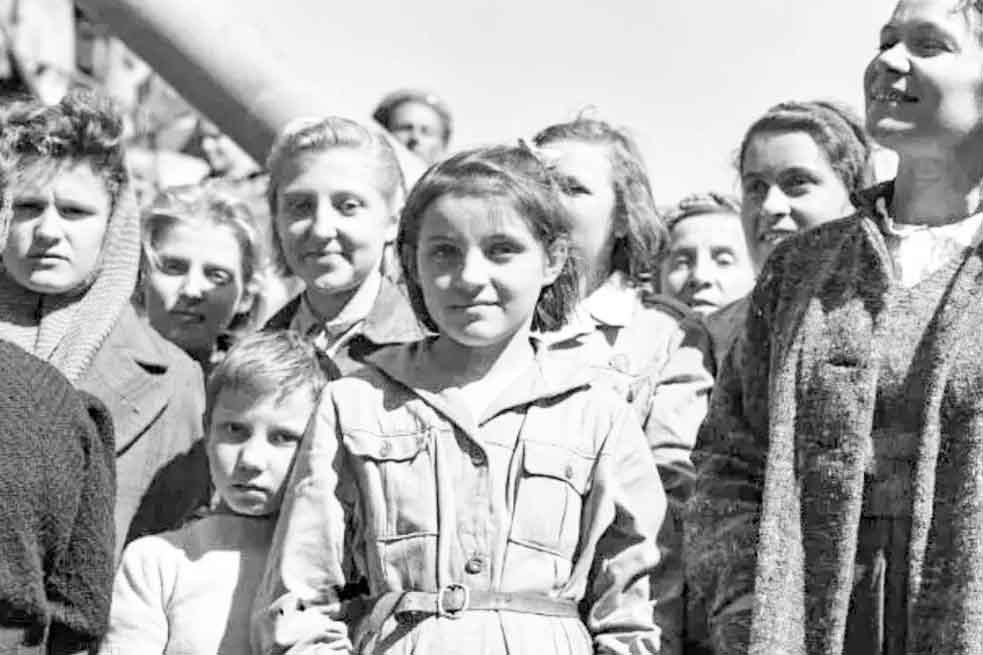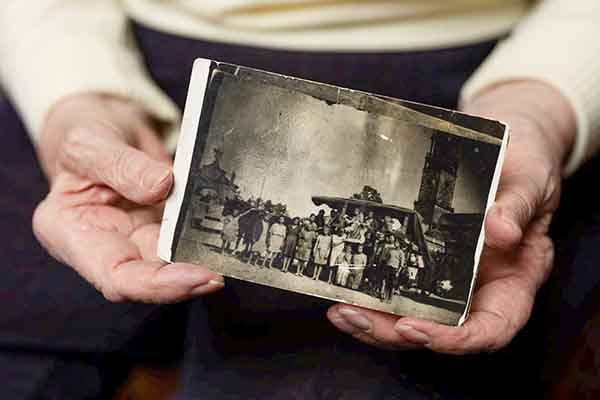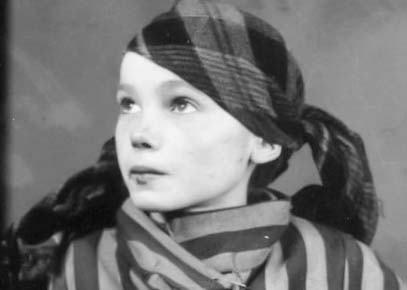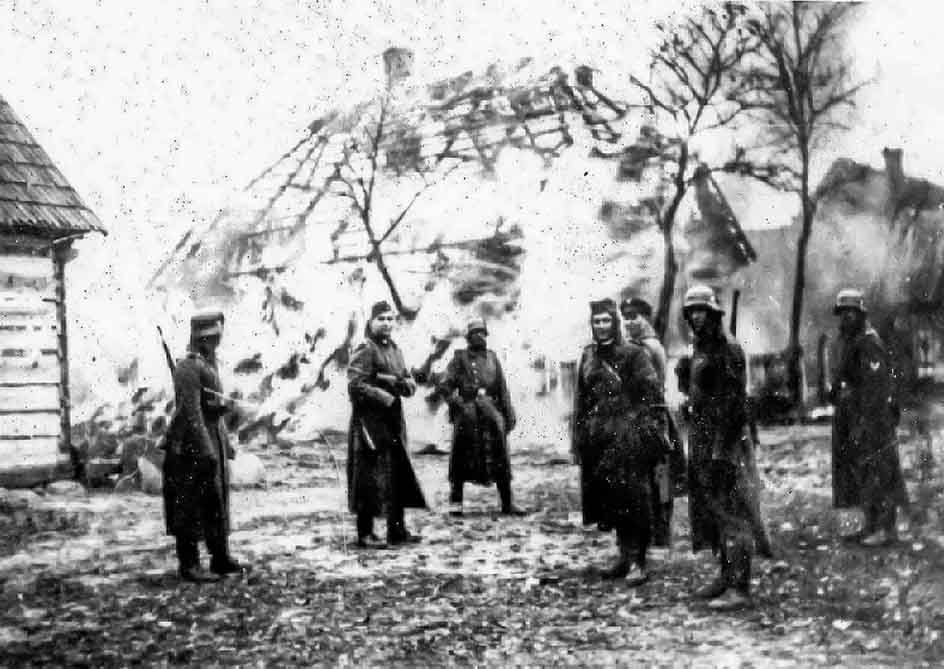During the exceptionally severe winter of 1942 and 1943, frosts reached even -30˚C (-22˚F). The weather conditions were so severe that deer froze in the fields, unable to dig down to the winter crops. On the morning of Sunday, January 31, 1943, it was raining and snowing in Siedlce, and around noon a cold, piercing wind blew from the west. As FJ Górski writes, it was in such circumstances that the train of horrors appeared in the city that day.
The railwaymen from the signal box were staring into the distance of the shiny tracks, on which a train of horror, fear, and death was about to enter from the direction of Łuków. Near the ramp at the Czeremchów tracks, a silent crowd was gathering with blankets, bread and hot coffee. Women with tears in their eyes and hatred were looking at the approaching Gestapo car, at the muddy puddles, the leaden sky and the smoke from the slowly approaching steam engine.
Finally the train stopped at the railway station, from where it was immediately put on a side track – on the orders of the Germans. It was a train of horror. Will we go “behind the bars” again? – asked the adults getting out of the wagons, with terror in their eyes, starving, half-frozen, poorly dressed and exhausted. This terrifying sight was commented on by Standartenführer Diehl, who, turning to Dr. Zygmunt Niepokoj, who was standing next to him, said:
«I resettled Latvia, Estonia and Lithuania, but I have never seen such cattle.» The train driver, seeing the terrible misfortune of his countrymen, shouted: «We serve you, and what are you doing to our people?» and in a rage threw a rag from the locomotive at the feet of the Gestapo officer. Diehl turned to me and asked: «What is he saying?» I tried to control myself and replied calmly: «He has been driving all night, he is tired and hungry, hence his irritation.» Diehl said nothing.
we read in Dr. Niepokoj's memoirs.
998 people arrived in Siedlce in cattle freight railcars, including about 550 children (up to the age of 14). "Their appearance is terrible. They are not people, but skeletons" — this is what the underground magazine "Polak" wrote about the children from this transport. After unloading the railcars, it turned out that 9 people did not survive the hardships of inhumane transport — crowded in unheated freight wagons. Over the next two days, 14 more people died. On February 3, 1943, 23 people were buried in a mass grave: children and adults.
The identity of five deceased adults (aged around 50-65) and three children, who were buried as "NN", could not be established. They were:
- a boy of unknown name, about 11 years old, wearing high-top shoes, homespun trousers and a brown sheepskin jacket (three photographs were found on him);
- girl, name unknown, about 10 months old, barefoot, brown dress with white circles, white cap, red trim;
- girl, name unknown, about 6 months old, barefoot, brown T-shirt, pink sweater and white cap with blue stripes.
A "Memento" for the Germans
The several thousand strong, silent crowd walking through the streets of Siedlce to the local cemetery was a dangerous "memento" for the Germans. The next burials of the deceased newly arrived from the Zamość region were carried out under the cover of night, with secrecy maintained. Even the day after this demonstrative funeral, great commotion could be noticed among the city's residents. They spoke with sympathy about the victims of German brutality and about the participation of thousands of Siedlce residents in the funeral.
Whoever could rushed to the train station to save the children
"We were brought to Siedlce before noon," recalls Maria Kolo, "and the entire transport was directed to the Polish Red Cross. On the way, the people of the city came out from the ramp to help. People came out with whatever they had, sandwiches, bread, rolls, warm coffee and milk. We were surprised that the Germans allowed us to come up and give them food." Her sister Janina, on the other hand, stated: "The generosity of the community was enormous, whoever could, saved children, and it was difficult to feed even your own family during the occupation, and a child with lice and illness had to be shaved, bathed, its clothes burned and treated for a long, long time."
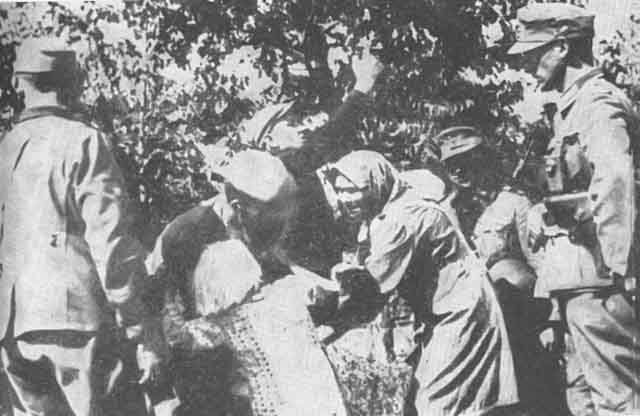
Abduction of Polish children during the displacement operation in the Zamość region (Source: Wikipedia)
The reaction of the Siedlce residents to the arrival of the transport with children and elderly people from the Zamość region was immediate. "Patterns of women and men loaded with bread, hot milk and clothing were heading towards the arrivals — recalls Józef Buszko — to feed them and provide them with clothing."
The city's residents had already gathered in large numbers at the station. Local cab drivers were transporting the displaced people free of charge to the prepared quarters in the former Polish Red Cross building (in the centre of Siedlce), which the residents were "filling with piles of food, up to the ceilings".
They brought bread, meats, butter, cheese, lard…
Decades have passed since those events, and yet many of the "Children of Zamość" who were saved at that time have never forgotten that their wartime fate is connected with the city of Siedlce.
Mieczysław Furmańczuk, who was 9 years old at the time, was among those in that transport of horror. He arrived in Siedlce with his mother and his brother, who was 5 years younger than him (who later became a poet). In 2011, Mieczysław wrote to the author of the article: "My brother and I have always remembered the many wonderful people thanks to whom we escaped the transport alive and spent several years in Siedlce as free people. Siedlce was our second home at that time."
Translation from Polish by Andrew Wozniewicz.







